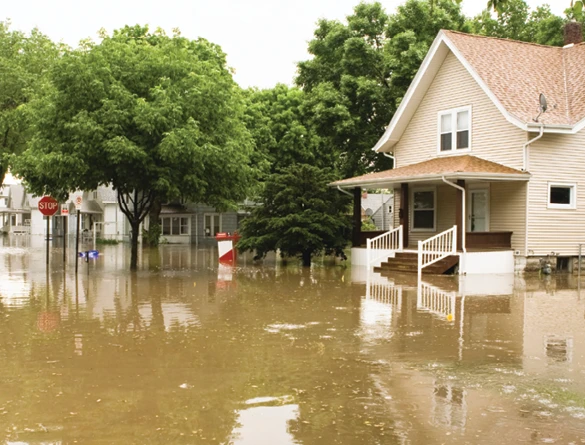
© PickStock | iStock.com
Retreatment for subterranean termites can only be performed if there is clear evidence of reinfestation or disruption of the barrier due to construction, excavation or landscaping and/or evidence of the breakdown of the termiticide barrier in the soil. These vulnerable or reinfested areas may be retreated in accordance with application techniques described in this product’s label-ing. (EPA PR Notice 96.7)
If a treated area is flooded, does that mean the termite protection is gone? Most termiticides can tolerate short periods of wetness but swift-moving water and flooding may mean retreatment is necessary for continued termite protection. Flooding from heavy rains can wash away treated soil or dump silt and mud on top of termite bait stations. Repairs and new landscaping after storms also can disturb termite barriers, requiring retreatment.
The National Pest Management Association says retreatment should be considered when the following conditions exist after a hurricane, storms or heavy rains:
- Soil erosion next to the foundation has removed termiticide-treated soil or termite bait stations.
- Soil, silt, sand or other material has been deposited on top of termite-treated areas or on top of bait stations.
- Repairs to the structure have resulted in movement of treated soil or replacement of treated wood.
- Treated soil or bait stations have been disturbed during removal or replacement of damaged landscaping.
- There has been movement of foundation walls, patios, porches or other structural elements as a result of the storm.
Homeowners’ insurance policies may cover the costs of retreating areas where the termite barrier has been compromised by weather or repairs. Your customers should consult their insurance companies to find out if this is the case for them.
The authors are well-known industry consultants and co-owners of Pinto & Associates.

Explore the March 2016 Issue
Check out more from this issue and find your next story to read.